Build Quality
As we already know the ASUS ROG THOR 850W a single 135mm fan design that is used in the same vein as 120mm fans in that these can provide for quiet cooling environments due to the ability to move a larger volume of air at slower speeds than a smaller diameter fan. The 135mm fan is just about the largest diameter fan we are likely to see in ATX power supplies given the physical constraints of the form factor. While great for quiet computing environments the key criteria in our evaluation is whether or not the cooling solution is sufficient, not necessarily it’s sound output level or form factor, although we certainly listen for offending units.
External Build Quality

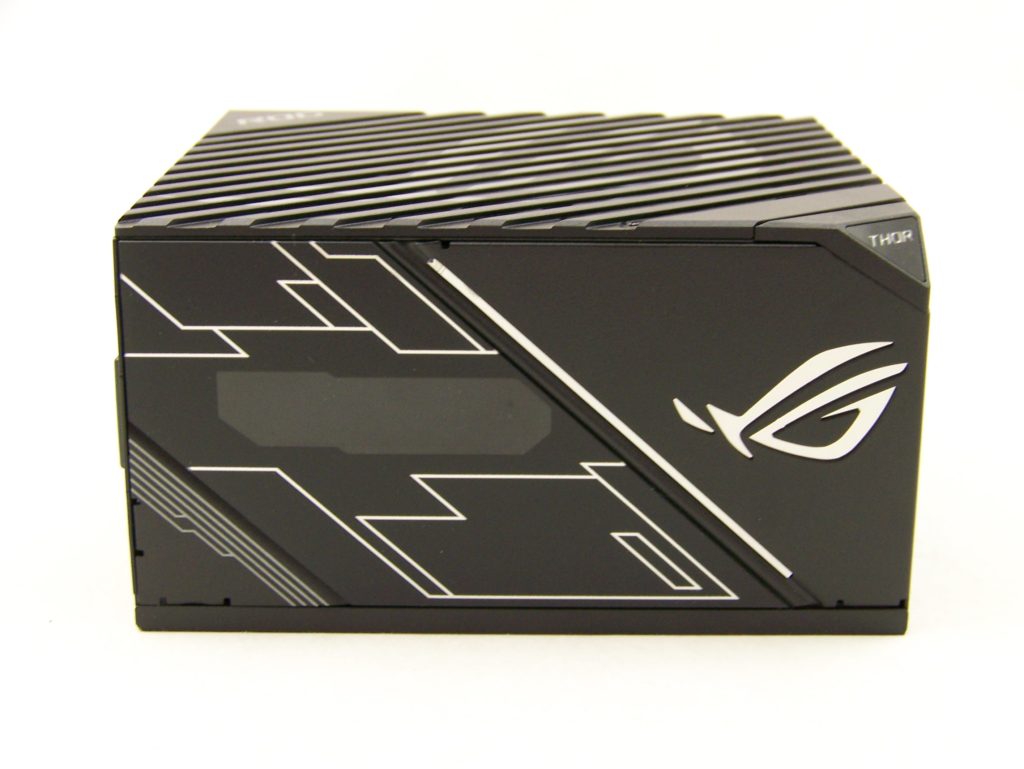

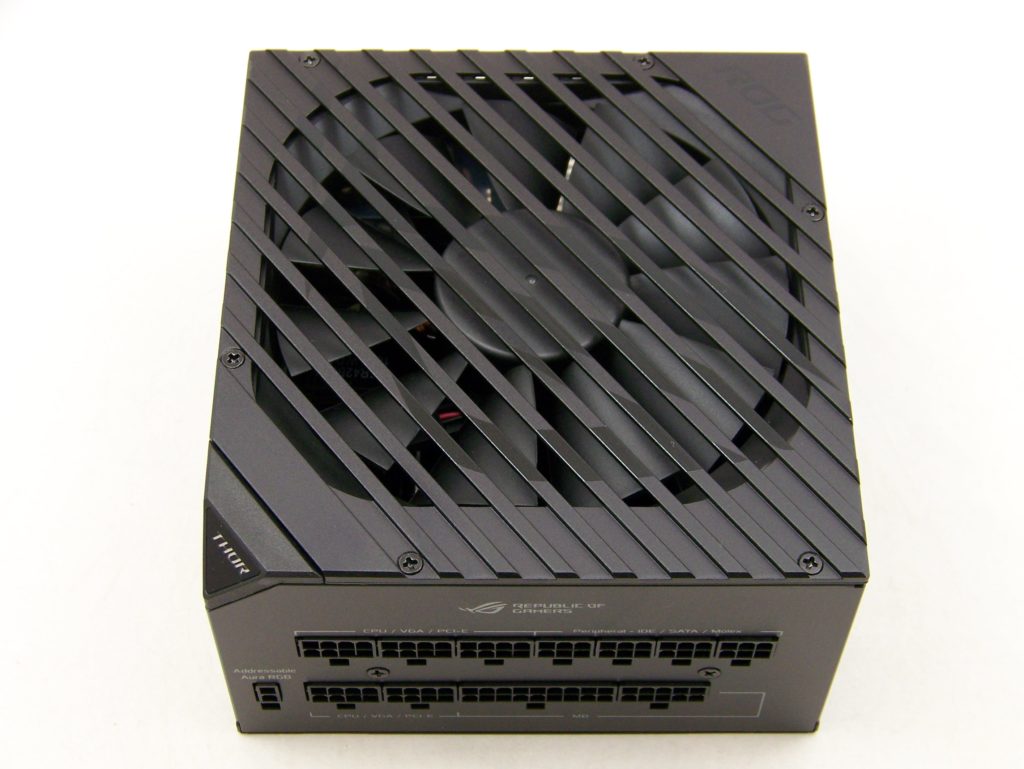
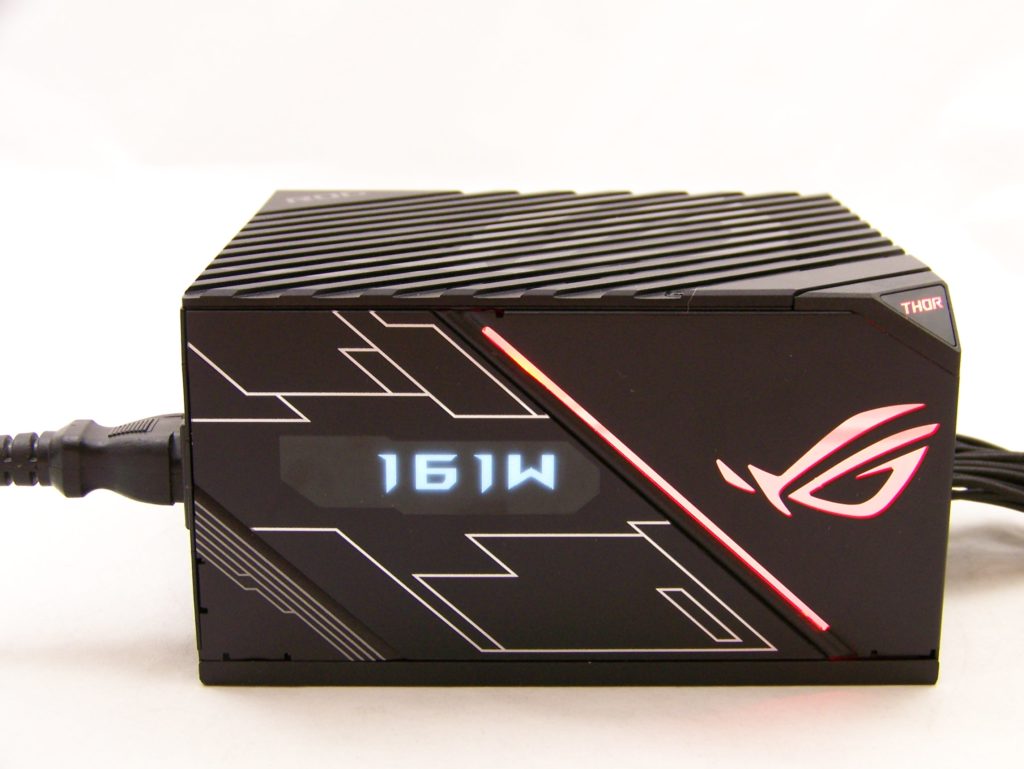
The exterior of the ASUS ROG THOR 850W is rather unique, in a good way, looking power supply in a sea of similarity. True, it has the same general shape, color, modular interface, large overhead fan, and APFC that most units do, but it has that extra dash of style and finish that makes it unique. Among these items is the OLED power display (seen above) which is a simple display that gives you a quick start-up splash screen and then displays the current power output of the unit. The ROG branding, glowing ROG logo, and the unique fan grill design further round out the unique design elements that you do not see from most units. This leaves us with the distinct impression when handling this unit that we have something special in our hands. Well played ASUS, well played.
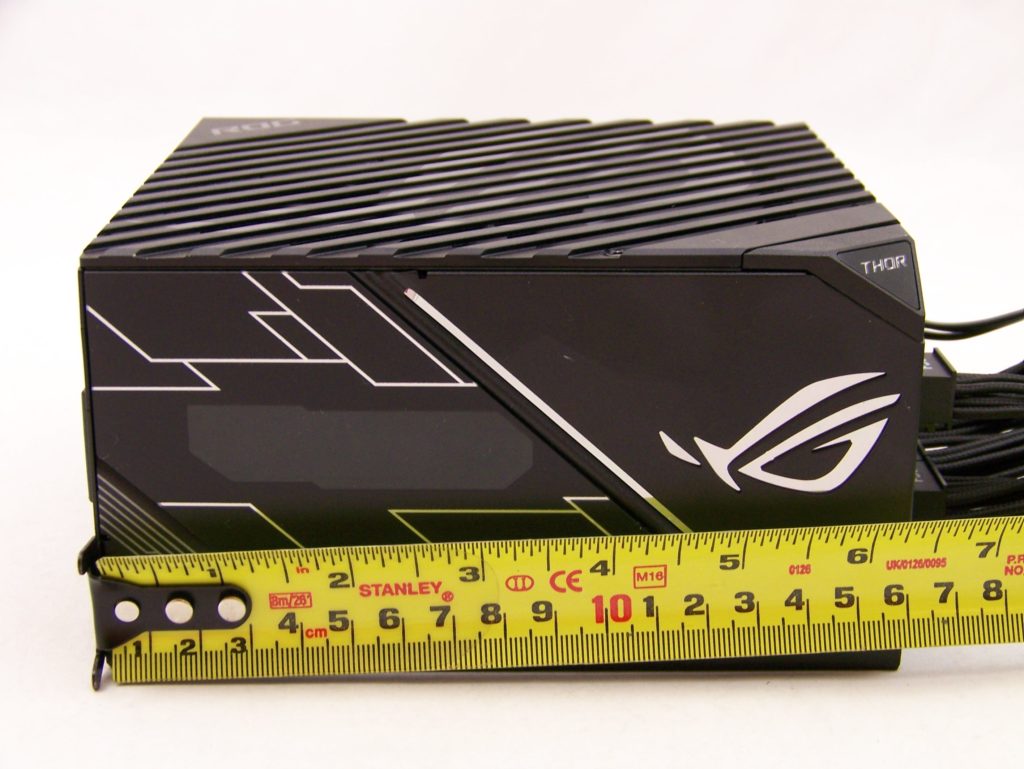
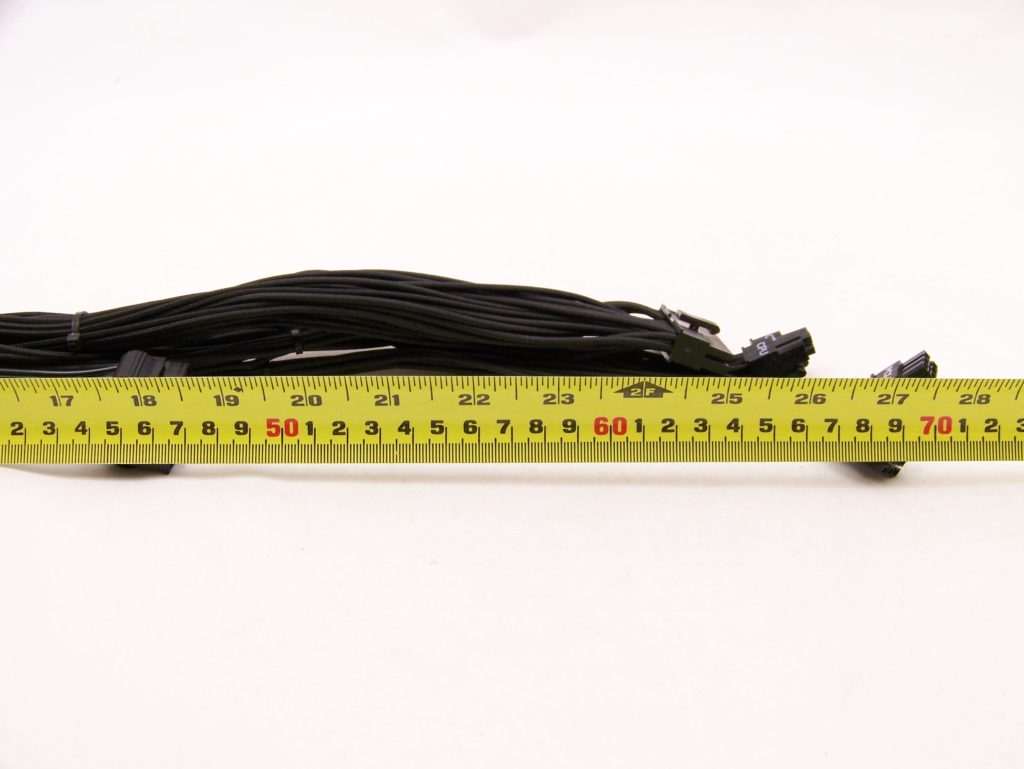
The ASUS ROG THOR 850W comes in at a total length of ~6 1/4 inches while the cables come in at a length of ~18″ to 28″ to the first or only connector. Additionally, the cables are a horrible mix of FlexForce style cables, individually sleeved, and standard sleeving. This is just a mess.
Internal Build Quality
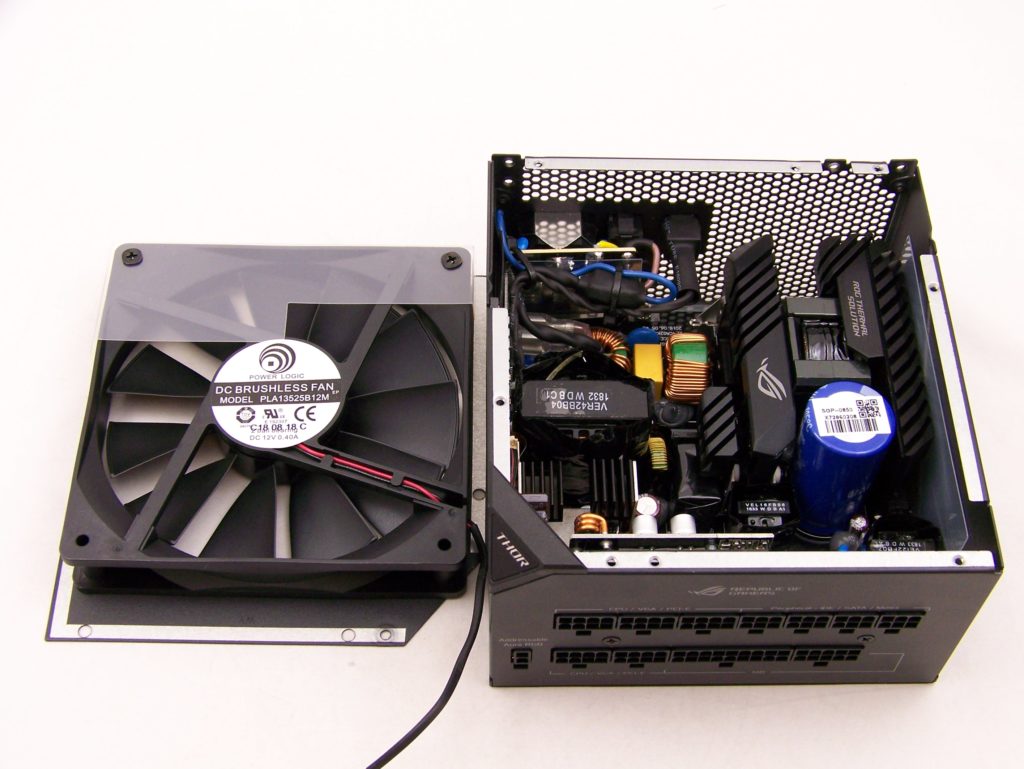


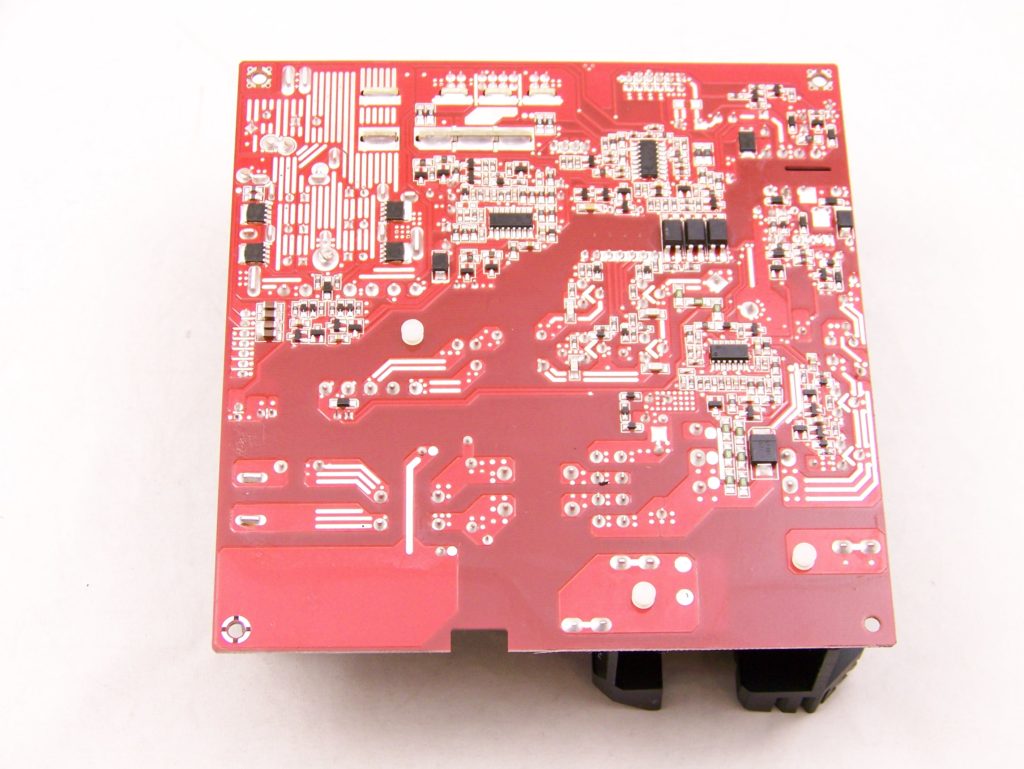
Once we open the top of the ASUS ROG THOR 850W, we see a Seasonic PRIME based unit. The most noticeable differences are the ROG specific heatsinks and the circuitry for the OLED display and ROG lights. The topology is a resonant LLC primary with a synchronous rectification secondary and DC-DC VRM’s for the minor rails. The fan cooling this unit today is a dual ball bearing Power Logic fan rated at 0.4A at 12v. Lastly, we see the typically neat soldering of Seasonic as well as the 12v MOSFET’s on the rear of the main PCB.
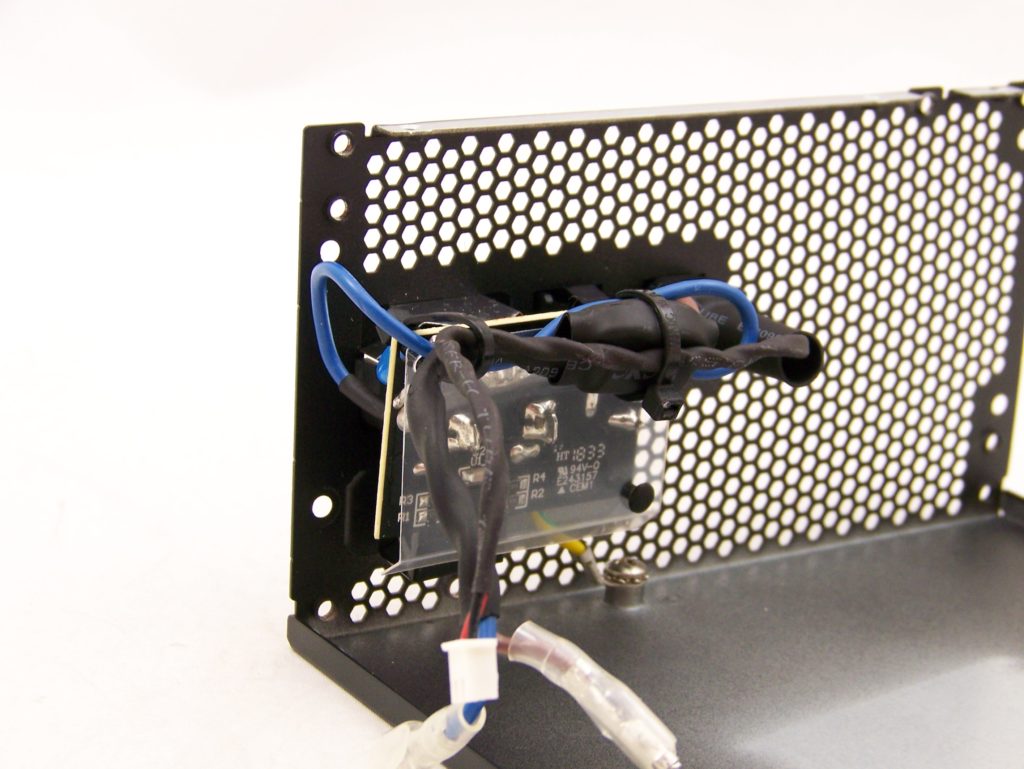
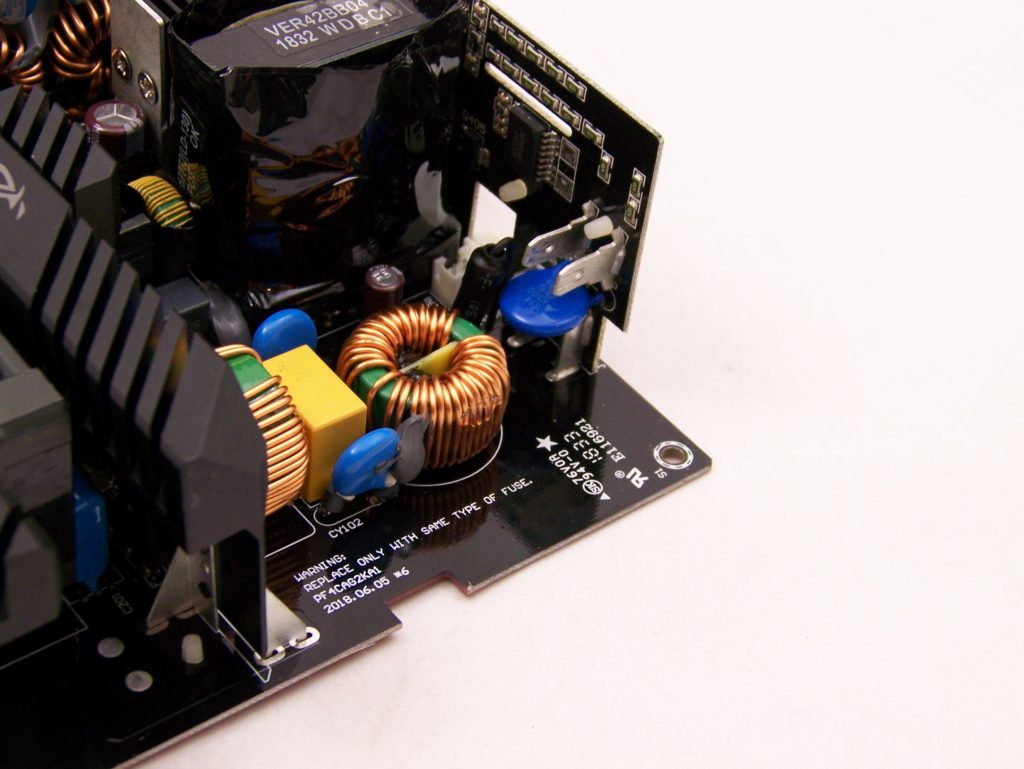
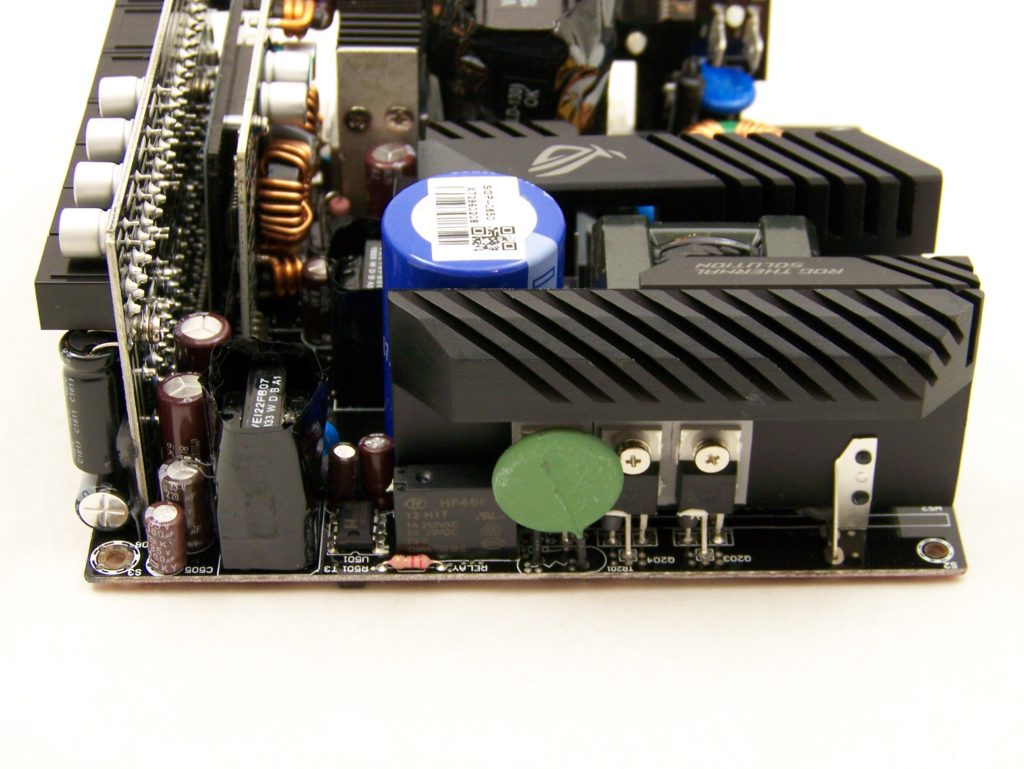
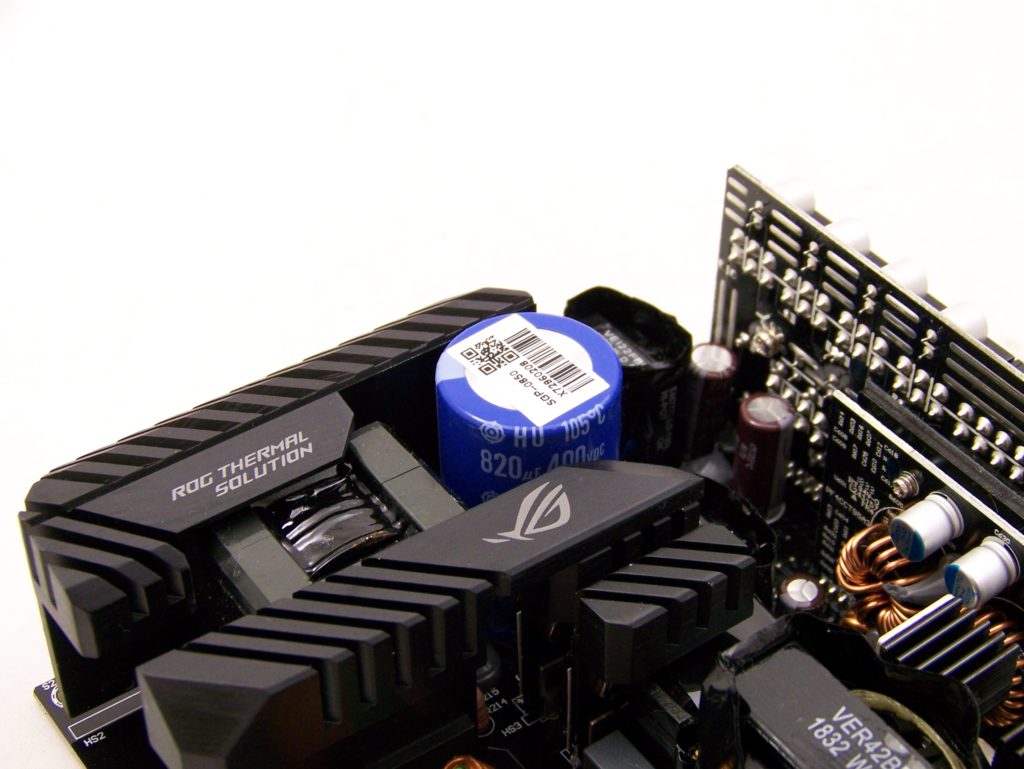
The ROG THOR 850W input filtering begins up on the housing itself with some X capacitors and Y capacitors on a PCB with the balance on the main PCB. The bridge rectifier is next and it is attached to one of the unique ROG heatsinks. The APFC coil is next and it is followed by the APFC power components on another ROG specific heatsink. By this heatsink is the main input capacitor which is provided by Hitachi and rated at a huge 400v 820uF 105C. Circling back, the main switchers are on the heatsink towards the middle of the unit.
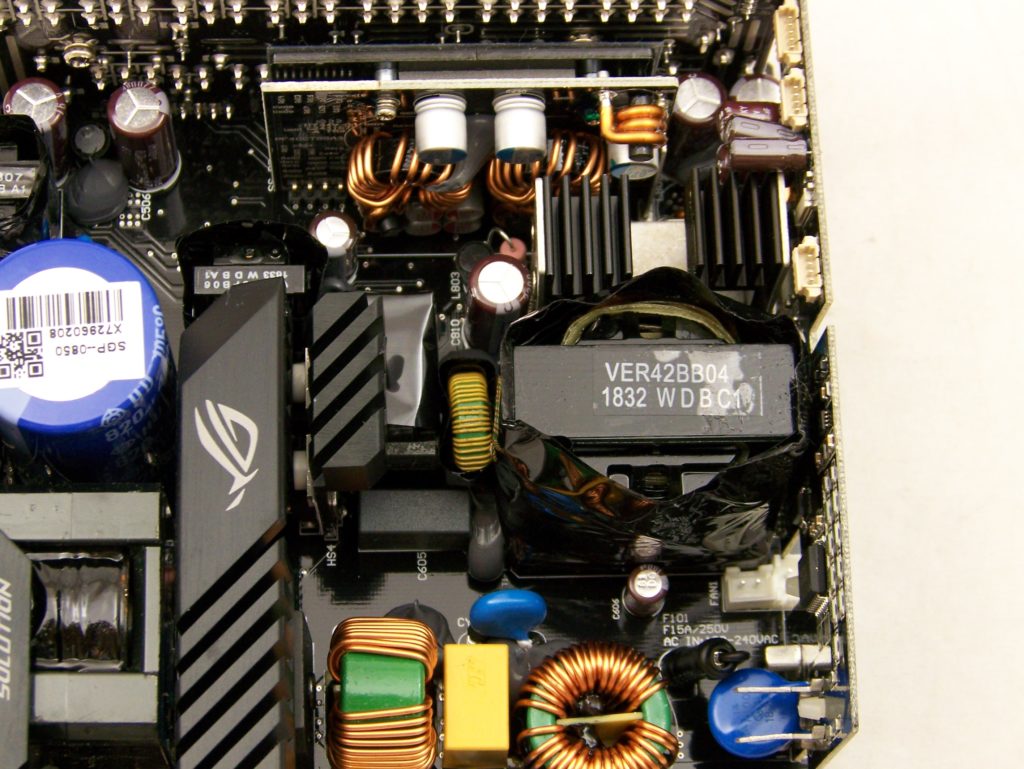
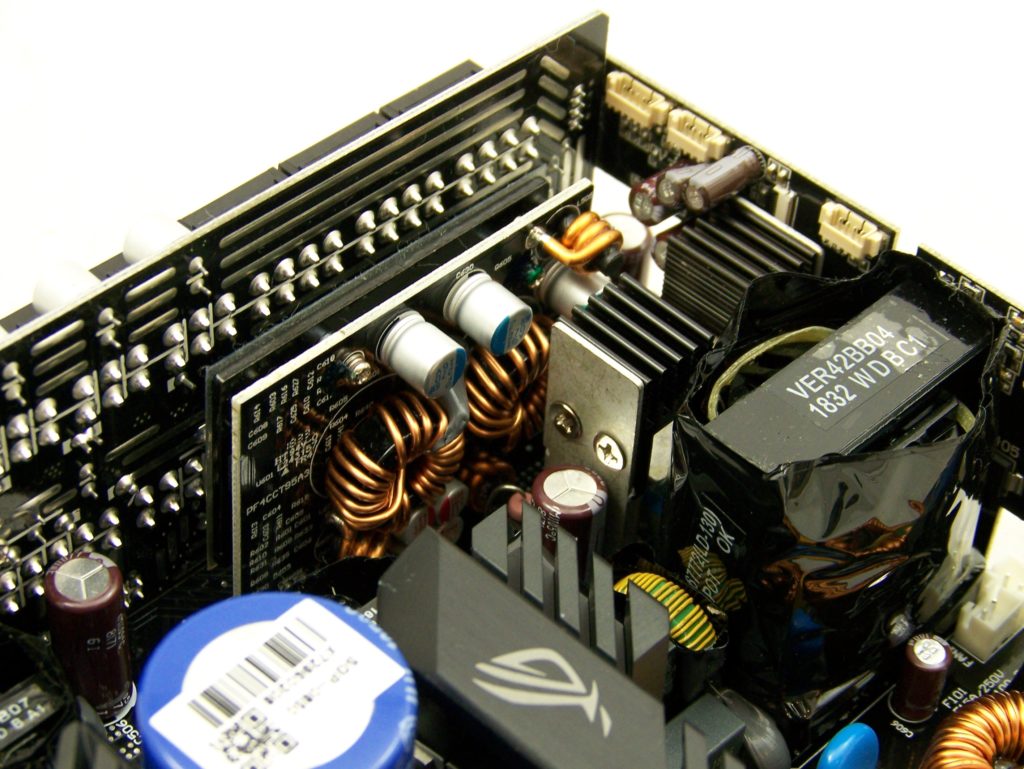

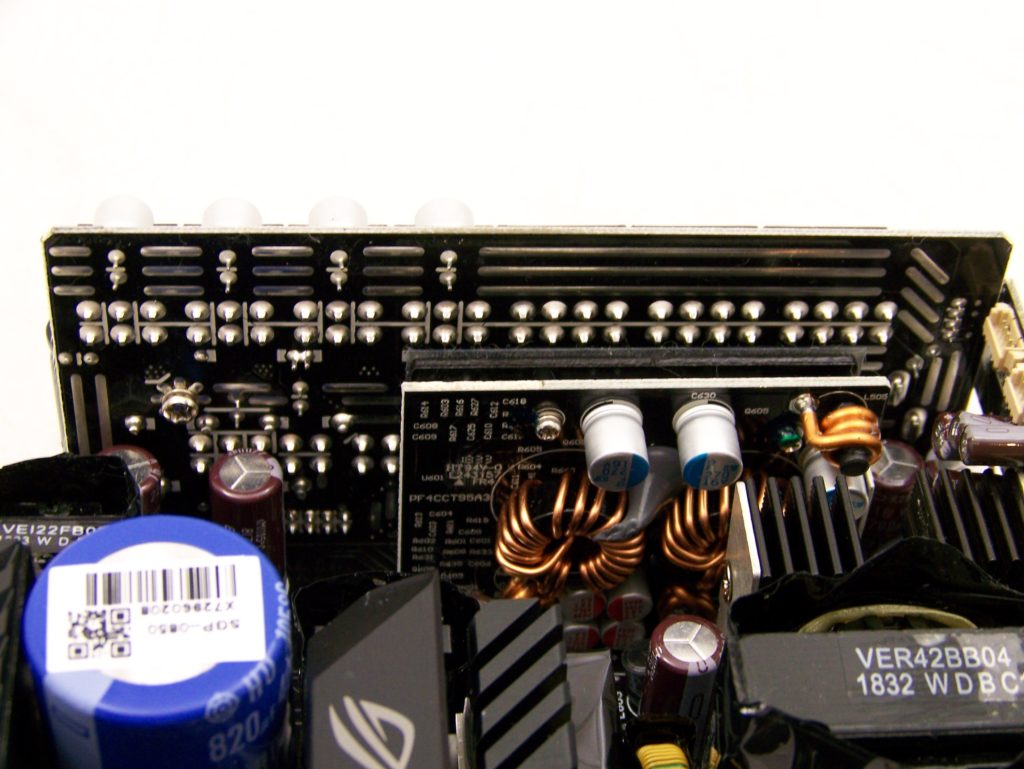
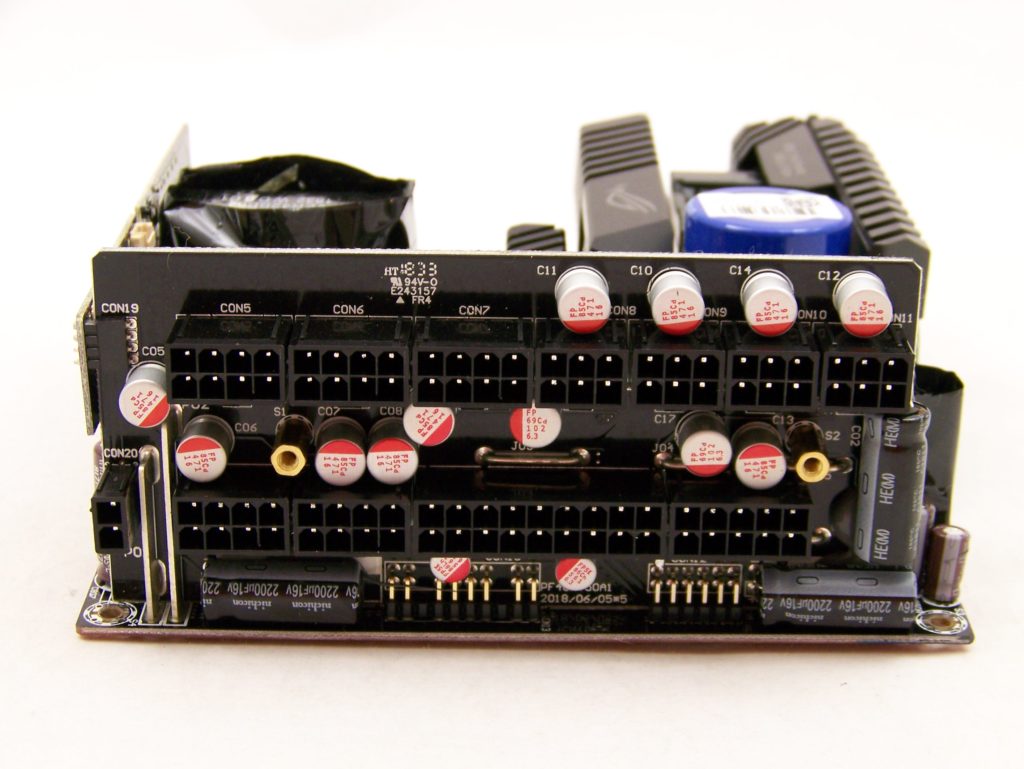
The secondary side of this unit looks like other PRIME based units with the addition of the ROG specific features like the heatsinks and PCB’s to run the lights/displays. In this area, we find the main transformer by a pair of heatsinks. These heatsinks are used by the MOSFETs. Behind this we find the DC-DC VRMs housed on their own PCB (populated by Nippon Chemi-con and FPCAP solid capacitors) up against the modular PCB. In front of these PCB’s we find a few standard electrolytics provided by Nippon Chemi-con. The modular PCB construction looks very nice and there are more FPCAP solid capacitors here as well as a few Nichicon standard capacitors.
Build Quality Summary
Today’s ASUS ROG THOR 850W is the first power supply we have seen from ASUS and ASUS is making a splash with this unit. This splash is immediately obvious with the unique ROG branding this unit carries and the attention to detail on the exterior of the unit (except for the horrible grab bag of cables the unit ships with) and on the interior of the unit. The modern PRIME based design is generally well-executed (as we would expect from a PRIME unit) even though it is more congested than normal with the ROG branded touches. The integration is very well done and the component selection is excellent as we see Nippon Chemi-con, Nichicon, and Hitachi standard capacitors as well as FPCAP and Nippon Chemi-con solid capacitors today. We also see a Power Logic fan used in this unit. All in all, the ASUS ROG THOR 850W is a very striking unit, both inside and out, with the design choices that ASUS has made. Now, let’s move on now to the load tests and see if ASUS has spent too much time on the looks and not enough of the performance!
